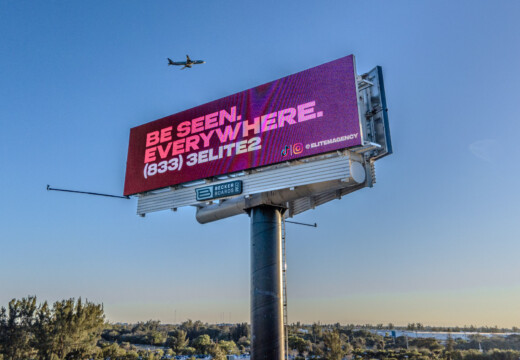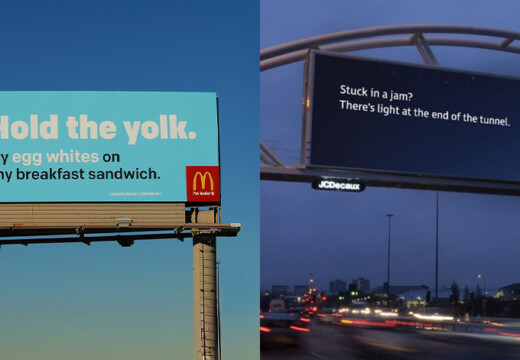With digital billboards, you can now launch campaigns for as low as $20 per day and manage everything yourself using platforms like Blip. Even a $100 daily budget can get you big results with the right strategy.
Here’s how to make the most of your money:
- Set clear goals: Focus on brand awareness, local visibility, or event promotion.
- Pick high-traffic locations: Use tools to target the right audience at the right time.
- Leverage pay-per-play pricing: Only pay for the ads shown.
- Schedule smartly: Allocate budgets to peak times like rush hours.
- Track performance: Monitor impressions, costs, and audience data to refine your campaign.
Digital billboards are flexible, affordable, and perfect for small businesses. Start small, test, and scale up as you see results.
Digital Billboard Basics
Digital vs Static Billboards
Digital billboards have changed the game compared to traditional static ones. Static billboards stay the same for weeks or months and need manual printing and installation. In contrast, digital billboards use LED screens to rotate multiple ads, which can be updated remotely in just minutes. This makes them a more efficient and flexible option, especially for advertisers looking to make the most of their budgets.
Benefits of Digital Billboards
Digital billboards bring a range of perks, particularly for advertisers working with tight budgets:
| Feature | What It Means | Why It Matters |
|---|---|---|
| Pay-per-play pricing | Pay only for the ads shown | Keeps costs under control |
| Real-time bidding | Prices adjust every 10 minutes | Helps secure better rates |
| Flexible scheduling | Pick specific times and dates | Reaches the right audience |
| No long-term contracts | Start or stop anytime | Perfect for testing ideas |
"Blip works for us. It’s a different medium, and it brings a lot of exposure. It sets us apart from the rest of the [competition], and that’s what I like."
Performance Measurement
Digital billboard campaigns let you track results with key metrics like:
- Daily Impressions: Estimates how many people see your ad
- Average CPM (Cost Per Thousand Impressions): Compares cost-effectiveness across locations
- Viewing Time: Measures how long your ad stays in rotation
- Location Performance: Provides insights into traffic patterns and audience demographics
Modern platforms make it easy to choose locations based on these metrics, ensuring even smaller budgets can target high-traffic areas at the best times. This data-driven approach helps advertisers get the most out of their campaigns.
Planning a $100 Daily Campaign
Campaign Goals
Clear objectives are key to making your billboard advertising work. Set specific, measurable goals like these:
| Goal Type | Example Target | Measurement Method |
|---|---|---|
| Brand Awareness | Reach 50,000 daily impressions | Track impression metrics |
| Local Visibility | Target 3-mile radius around store | Monitor location performance |
| Product Launch | 2-week campaign across 5 locations | Compare pre/post sales data |
| Event Promotion | 80% venue capacity | Track ticket sales correlation |
Location and Time Selection
Choosing the right location ensures every dollar works harder. Blip’s marketplace provides tools to evaluate locations based on:
- Traffic Volume: Look for billboards with verified daily impression counts.
- Demographics: Align locations with your target audience.
- Peak Hours: Focus on rush hours, typically 7-9 AM and 4-7 PM.
- Cost Efficiency: Compare CPM rates to find the best value.
With these insights, you can refine your spending strategy and target the right audience at the right time.
Budget Management
Make the most of your $100 daily budget:
- Start small by testing locations with $20-$30 budgets. Use 10-minute bidding to secure lower rates during off-peak hours. Rush hours often require higher bids, while mid-day slots can be more affordable.
- Plan your spending around peak traffic times. For example, allocate $40 for the morning rush, $25 for lunchtime, and $35 for the evening rush to reach the most viewers.
"Billboards are one of the most impactful ways to advertise, and with Blip, you spend a fraction of what you would end up paying elsewhere." – Ray Bowens, Founder, Hashtag-Vape
How to Use Blip‘s Software for Billboard Advertising

sbb-itb-2e2e93f
Billboard Design Guidelines
Once your campaign goals are clear, a strong design can make all the difference.
Design Basics
To grab attention, use high-contrast colors, bold, readable fonts, and high-quality images. Leave enough white space to keep things clean and easy to digest from a distance. Pair light text on dark backgrounds (or the reverse) to make your message pop. Keep your visuals sharp and avoid clutter – your audience only has seconds to take it all in.
Crafting Your Message
Billboard messages need to be short and impactful. Focus on one main point, clearly feature your brand, and include a direct call-to-action. This way, even a quick glance leaves a lasting impression.
Branding Essentials
Consistency is key for brand recognition. Stick to your brand’s color scheme, showcase your logo prominently, and follow your style guide for fonts and spacing. Always test your design from different distances and under various lighting conditions.
For digital billboards, remember that display settings can vary. Check how your design looks in different environments to make sure it works just as well on a screen as it does in print.
Self-Service Platform Tips
When planned and designed well, self-service platforms make running campaigns smoother and more efficient. These platforms have made billboard advertising accessible, even for businesses with smaller budgets.
Platform Features
Self-service platforms offer tools that help you manage campaigns with precision:
| Feature | What It Does | Quick Tip |
|---|---|---|
| Real-time Bidding | Updates prices every 10 minutes for competitive rates | Start with lower bids during off-peak hours to save money |
| Interactive Marketplace | Lets you choose locations based on data and metrics | Target high-traffic areas that fit your budget |
| Flexible Scheduling | Run ads when your audience is most likely to see them | Experiment with different times of day to get the best results |
| Pay-per-play Model | Pay only when your ad is shown | Set daily budget limits to manage spending easily |
Using Analytics Tools
Keep an eye on key metrics like daily impressions, average CPM, peak viewing times, and location performance. Use this data to adjust your budget to focus on locations with better engagement and tweak your schedule to match peak viewing periods. These insights can drive better outcomes, as shown in the example below.
Small Business Example
Small businesses have seen real success by combining advanced bidding tools with real-time data. Take Mr. Charlie’s Chicken Fingers, for instance. Owner Paul Willey shared:
"Working with Blip has given Mr. Charlie’s the momentum to get our new location on the map while accelerating growth for our original location".
Chris Leslie, Founder of Leslie Lightcraft Co, also highlighted the power of billboard advertising:
"It’s not a social media thing that you see on your phone. It’s not word-of-mouth. It’s big and bold and out there in public. I would say this is the first step of looking big and public".
These examples show how self-service platforms allow small businesses to make a big impact while staying within their budgets. Start small, test various strategies, and use analytics to fine-tune your campaigns for the best results.
Conclusion
Key Takeaways
Digital billboard advertising is now accessible to small businesses, delivering big results even on a tight budget. With self-service platforms, you can grab premium billboard spots starting at just $20 per day and maintain full control over your campaigns.
Here’s what drives success:
- Focus your budget (e.g., $100 daily) on high-traffic locations.
- Use real-time bidding to secure better pricing.
- Monitor analytics to refine your campaign.
- Design ads that are clear and attention-grabbing.
- Experiment with different time slots to boost visibility.
How to Get Started
Launching your campaign is straightforward with these steps:
- Set your daily budget (starting at $20).
- Choose locations based on traffic and platform metrics.
- Upload your ad design, following platform guidelines.
- Track performance using built-in analytics tools.
- Adjust your bids and schedule to optimize results.


